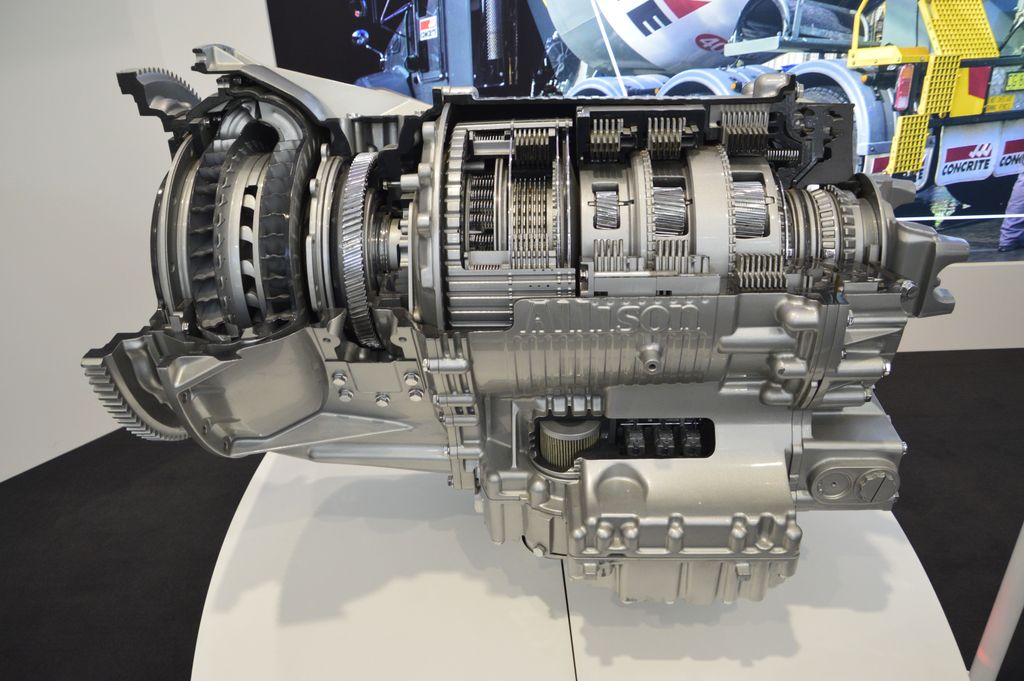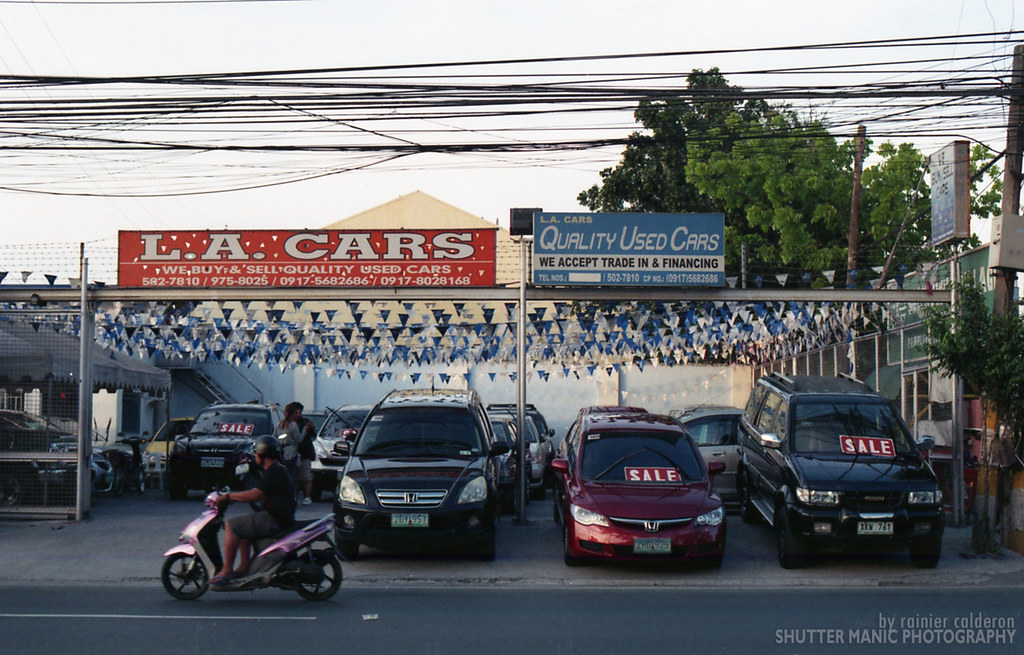
The hybrid automotive world has witnessed a remarkable transformation over the past two decades. What began as experimental technology has now firmly established itself as a mainstream transportation solution. These vehicles promise a compelling blend of improved fuel economy and reduced emissions, making them an attractive option for environmentally conscious and budget-minded consumers alike.
However, the inherent complexity of modern hybrid powertrains, which seamlessly integrate traditional internal combustion engines with electric motors, battery packs, and sophisticated control systems, means that reliability can vary significantly across different manufacturers and model lines. This complexity introduces multiple potential failure points that simply do not exist in conventional vehicles. Understanding which hybrid engines deliver exceptional longevity versus those plagued by frequent repairs is crucial for consumers looking to avoid thousands in unexpected maintenance costs and frustrating downtime.
When properly engineered and manufactured, hybrid powertrains can indeed prove more reliable than their traditional counterparts, often due to reduced operating stress and advanced monitoring systems. The most dependable hybrid engines typically share common characteristics: they are built upon proven gasoline engine foundations, feature conservative tuning that prioritizes longevity over peak performance, incorporate robust battery thermal management systems, and utilize mature control software refined through multiple generations of development. These are the powertrains that can accumulate hundreds of thousands of miles with minimal major repairs, representing excellent long-term investments for cost-conscious consumers seeking environmental benefits without sacrificing dependability.
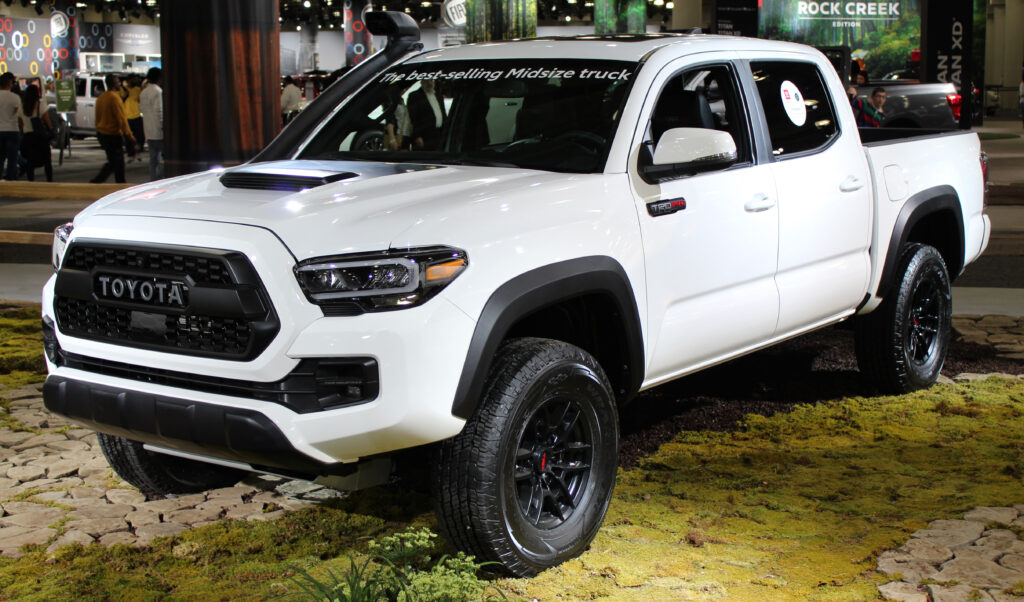
1. **Toyota Prius Hybrid Powertrain (2004-Present)**The Toyota Prius hybrid system has earned its reputation as the gold standard for hybrid reliability. With over two decades of continuous refinement, it stands as one of the most dependable powertrains ever produced. The current generation proudly maintains Toyota’s unwavering commitment to conservative engineering, all while incorporating modern efficiency improvements that enhance both performance and, crucially, longevity. Millions of Prius vehicles serve as a testament to this exceptional durability, with numerous examples confidently exceeding 300,000 miles on their original major components.
At the very heart of the Prius’s remarkable reliability is its Atkinson-cycle gasoline engine, a powerplant specifically designed for hybrid operation rather than being merely adapted from conventional applications. This thoughtful design means the engine operates under significantly reduced stress, thanks to the constant assistance from its electric motor. Toyota has ingeniously optimized internal components for maximum longevity, rather than chasing peak power output. As a result, the engine rarely operates at high RPM or under maximum load, a factor that profoundly extends component life compared to conventional powertrains that bear the sole responsibility for all acceleration demands.
Battery system reliability in the Prius has been thoroughly proven across multiple generations and millions of vehicles. The nickel-metal hydride battery pack, a staple in most Prius models, exhibits remarkable longevity, with many original batteries still functioning effectively after more than 15 years of dedicated service. Toyota’s conservative battery management system is key; it meticulously prevents deep discharge cycles and maintains optimal operating temperatures, thereby preserving battery chemistry integrity over extended periods. Even when replacement eventually becomes a necessity, the robust aftermarket options have made battery service both affordable and widely accessible, further cementing its long-term value.
The Prius’s electronic continuously variable transmission (eCVT) is a true masterpiece of hybrid engineering simplicity. Unlike conventional CVTs that rely on wear-prone belts and pulleys, the eCVT utilizes planetary gears and electric motors to provide infinite gear ratios without any physical friction components that typically wear out over time. This innovative design elegantly eliminates many traditional transmission failure modes. The vast majority of eCVT systems continue to operate smoothly even after hundreds of thousands of miles, requiring minimal maintenance beyond the occasional periodic fluid change, making it a benchmark for transmission durability.
Consistently exceeding expectations throughout the Prius’s extensive production history is the reliability of its power electronics and motors. The inverter, motor controllers, and the electric motors themselves rarely necessitate major service. Most reported failures are limited to easily replaceable sensors or minor electronic components, a testament to Toyota’s meticulous design philosophy. Toyota’s conservative approach to power electronics design clearly prioritizes long-term reliability over marginal gains in maximum efficiency, resulting in robust systems that retain their performance characteristics well beyond typical vehicle lifespans, offering peace of mind to their owners.
Car Model Information: 2018 Toyota Prius Four
Name: Toyota Prius
Caption: Fifth generation Prius (XW60)
Manufacturer: Toyota
Production: December 1997 – present
ModelYears: 2001–present (US)
Class: ubl
BodyStyle: unbulleted list
Layout: unbulleted list
Sp: uk
Categories: 2000s cars, 2010s cars, 2020s cars, All-wheel-drive vehicles, All Wikipedia articles in need of updating
Summary: The Toyota Prius ( PREE-əss) (Japanese: トヨタ・プリウス, Hepburn: Toyota Puriusu) is a car produced by Toyota since 1997 over five generations. The Prius has a hybrid drivetrain, which combines an internal combustion engine and an electric motor. Initially offered as a subcompact four-door saloon, it has been produced only as a compact five-door liftback since 2003.
The Prius was developed by Toyota to be the “car for the 21st century”; it was the first mass-produced hybrid vehicle, first going on sale in Japan in 1997 at all four Toyota Japan dealership chains, and subsequently introduced worldwide in 2000.
In 2011, Toyota expanded the Prius family to include the Prius v, an MPV, and the Prius c, a subcompact hatchback. The production version of the Prius plug-in hybrid was released in 2012. The second generation of the plug-in variant, the Prius Prime, was released in the U.S. in November 2016. The Prius family totaled global cumulative sales of 6.1 million units in January 2017, representing 61% of the 10 million hybrids sold worldwide by Toyota since 1997. Toyota sells the Prius in over 90 markets, with Japan and the United States being its largest markets.
Get more information about: Toyota Prius
Buying a high-performing used car >>>
Brand: Toyota Model: Prius
Price: $18,999 Mileage: 84,118 mi.

2. **Honda Accord Hybrid System (2014-Present)**Honda’s two-motor hybrid system, a prominent feature in the Accord Hybrid, stands out as one of the most innovative and, importantly, reliable hybrid architectures currently available. This system employs a unique approach to hybrid operation, artfully combining the impressive efficiency typically associated with series hybrid operation with the robust performance of parallel hybrid systems. The result is a powertrain that not only delivers impressive fuel economy but also boasts exceptional longevity, a combination highly valued by discerning consumers. The inherent mechanical simplicity and robust engineering of this system have consistently proven themselves across multiple model years and hundreds of thousands of real-world miles, underscoring its foundational dependability.
The reliability of the Accord Hybrid system is firmly rooted in its naturally aspirated 2.0-liter Atkinson-cycle engine. This engine primarily functions as a generator at lower speeds, operating at optimal efficiency points that significantly minimize wear and maximize fuel economy. When the vehicle is cruising at highway speeds, the engine can directly drive the wheels through a single-speed connection, a clever design that eliminates the complexity and potential failure points often found in traditional multi-speed transmissions. This intelligent dual operating mode effectively reduces stress on all powertrain components, all while maintaining excellent performance across diverse driving conditions, ensuring smooth and efficient operation.
Battery reliability in the Accord Hybrid has been nothing short of exceptional, with Honda’s lithium-ion battery pack demonstrating remarkable longevity and minimal degradation over time. The compact design of the battery pack, coupled with a sophisticated thermal management system, diligently maintains optimal operating temperatures even under demanding conditions. Furthermore, Honda’s conservative battery management strategy is a critical factor; it carefully prevents stress-inducing charging and discharging cycles, thereby preserving the intricate battery chemistry and significantly extending its operational life far beyond typical automotive battery expectations. This attention to detail ensures consistent performance and reduces long-term ownership concerns.
The innovative dual-motor setup in the Accord Hybrid provides distinct redundancy and reliability advantages over simpler single-motor systems. Each motor is meticulously designed to serve specific functions: one primarily for generation and the other for propulsion. This specialized division of labor allows Honda to optimize each unit precisely for its intended purpose, avoiding the compromises inherent in a single, all-purpose motor design. This specialization translates directly into motors that consistently operate within their optimal efficiency ranges, which in turn reduces wear and significantly extends their service life, all while maintaining peak performance characteristics throughout the vehicle’s entire operational lifetime.
Another significant strength of the Accord Hybrid lies in its sophisticated control system. Honda’s Intelligent Multi-Mode Drive (i-MMD) system seamlessly manages transitions between various operating modes without requiring any driver intervention. The system’s advanced algorithms continuously optimize powertrain operation, striving for maximum efficiency and minimal component stress at every turn. Software reliability has been consistently excellent, with periodic updates primarily addressing minor issues while the core system’s proven architecture and operational characteristics remain steadfast and dependable, offering a truly refined and reliable driving experience.
Car Model Information: 2019 Honda Accord LX
Name: Honda Accord
Caption: 2023 Honda Accord LX (US)
Alt: Front three-quarter view of a front-engined four-door car.
Manufacturer: Honda
Production: 1976–present
Class: Compact car
BodyStyle: hatchback
Layout: Front-engine, front-wheel-drive layout
Predecessor: Honda 1300
Categories: 1980s cars, 1990s cars, 2000s cars, 2010s cars, 2020s cars
Summary: The Honda Accord (Japanese: ホンダ・アコード, Hepburn: Honda Akōdo; ), also known as the Honda Inspire (Japanese: ホンダ・インスパイア, Hepburn: Honda Insupaia) in Japan and China for certain generations, is a series of automobiles manufactured by Honda since 1976, best known for its four-door sedan variant, which has been one of the best-selling cars in the United States since 1989. The Accord nameplate has been applied to a variety of vehicles worldwide, including coupes, station wagons, hatchbacks and a Honda Crosstour crossover.
Get more information about: Honda Accord
Buying a high-performing used car >>>
Brand: Honda Model: Accord
Price: $16,987 Mileage: 126,610 mi.
Read more about: Crossover Suspension Reliability Report: 5 Models Built to Last, 5 That Will Cost You
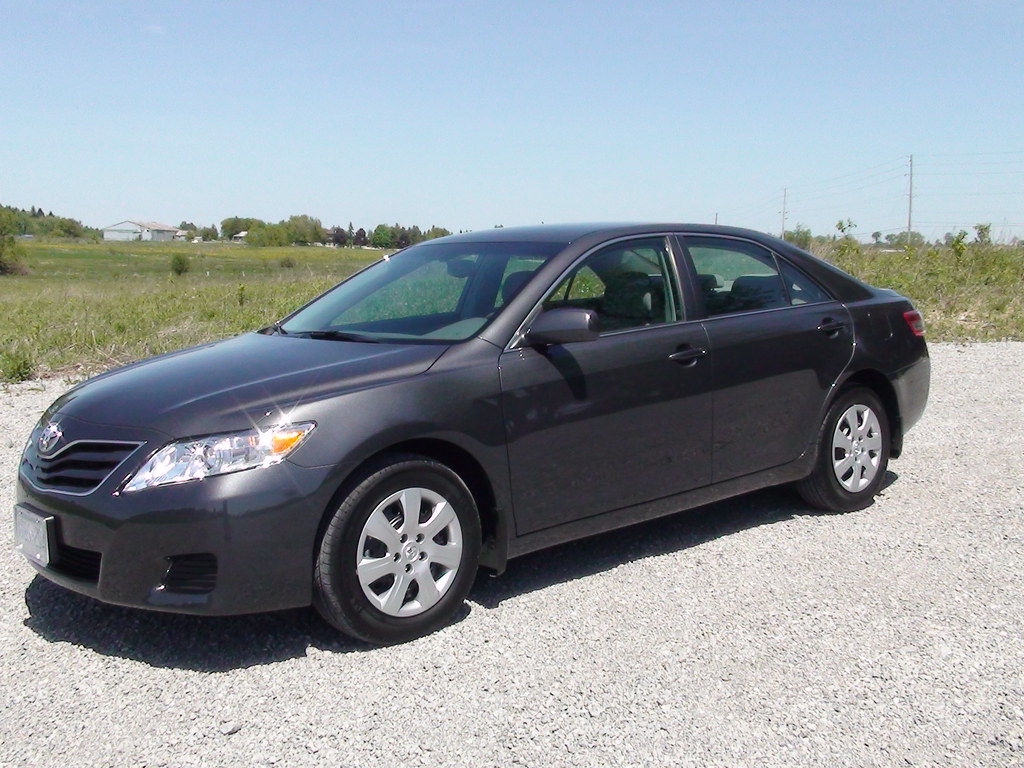
3. **Toyota Camry Hybrid Powertrain (2007-Present)**The Toyota Camry Hybrid stands as a testament to Toyota’s successful application of its renowned Prius technology to a more conventional sedan platform. This strategic move has resulted in a hybrid system that brilliantly combines mainstream appeal with the hallmarks of exceptional reliability. Across multiple generations, the Camry Hybrid has consistently demonstrated remarkable durability, all while delivering impressive fuel economy in a practical and widely appealing family sedan package. It has carved out a significant niche, proving that hybrid efficiency and robust performance can coexist harmoniously in a familiar form factor.
At the core of the Camry Hybrid’s dependability is its 2.5-liter Dynamic Force engine, a prime example of Toyota’s unwavering commitment to hybrid-specific engineering. This Atkinson-cycle powerplant integrates advanced technologies such as direct and port fuel injection, variable valve timing, and an optimized combustion chamber design, all meticulously tailored for hybrid operation. The engine’s conservative tuning is a deliberate choice, prioritizing efficiency and longevity over raw maximum power output. This approach results in significantly reduced stress on internal components and extended service intervals, which collectively contribute to minimizing long-term ownership costs, making it an economically sensible choice.
The Toyota Camry’s Hybrid Synergy Drive system has profoundly benefited from decades of real-world experience and continuous refinement. This sophisticated system masterfully blends the power of the gasoline engine and the electric motor, while simultaneously managing energy recovery through regenerative braking. This intelligent power management not only reduces wear on conventional braking components but also optimizes fuel consumption and minimizes overall powertrain stress across all operating conditions. The cumulative effect is a hybrid system that frequently surpasses the longevity expectations typically associated with conventional powertrains, offering a superior blend of performance and endurance.
The nickel-metal hydride battery pack, which is utilized in the majority of Camry Hybrid models, has demonstrated exceptional longevity across diverse climate zones and various driving patterns. Toyota’s conservative battery management system diligently prevents damaging deep discharge cycles, simultaneously maintaining optimal operating temperatures through its sophisticated thermal management systems. Even in the most extreme climates, original battery packs frequently surpass 200,000 miles of service, all while maintaining adequate capacity for seamless hybrid operation. Furthermore, replacement batteries are consistently and readily available when they eventually become necessary, ensuring continued reliability and practicality.
Transmission reliability in the Camry Hybrid draws significant advantages from the inherent simplicity of Toyota’s electronic continuously variable transmission (eCVT) design. This eCVT elegantly eliminates traditional friction components, such as clutches, bands, and torque converters, which are typically prone to wear and require regular service in conventional transmissions. Consequently, maintenance requirements are remarkably minimal, with periodic fluid changes representing the primary service need. The system’s mechanical simplicity directly translates into enhanced reliability and substantially reduced long-term maintenance costs for owners, making the Camry Hybrid a truly cost-effective and dependable vehicle.
Car Model Information: 2024 GMC Sierra 1500 Elevation
Name: Toyota Camry
Caption: 2018 Toyota Camry Ascent (ASV70, Australia)
Manufacturer: Toyota
Production: March 1982 – present
Aka: ubl
Class: ubl
Layout: ubl
Predecessor: ubl
Successor: Toyota Avensis (T250)
Categories: 1990s cars, 2000s cars, 2010s cars, 2020s cars, All-wheel-drive vehicles
Summary: The Toyota Camry (; Japanese: トヨタ・カムリ Toyota Kamuri) is an automobile sold internationally by the Japanese auto manufacturer Toyota since 1982, spanning multiple generations. Originally compact in size (narrow-body), the Camry has grown since the 1990s to fit the mid-size classification (wide-body)—although the two widths co-existed in that decade. Since the release of the wide-bodied versions, Camry has been extolled by Toyota as the firm’s second “world car” after the Corolla. As of 2022, the Camry is positioned above the Corolla and below the Avalon or Crown in several markets.
In Japan, the Camry was once exclusive to Toyota Corolla Store retail dealerships. Narrow-body cars also spawned a rebadged sibling in Japan, the Toyota Vista (トヨタ・ビスタ)—also introduced in 1982 and sold at Toyota Vista Store locations. Diesel fuel versions have previously retailed at Toyota Diesel Store. The Vista Ardeo was a wagon version of the Vista V50.
Get more information about: Toyota Camry
Buying a high-performing used car >>>
Brand: Toyota Model: Camry Hybrid
Price: $52,766 Mileage: 15,984 mi.

4. **Honda Civic Hybrid System**The Honda Civic Hybrid, with its accessible starting price of $28,750, offers an excellent entry point into the world of hybrid vehicles. Esteemed for its reliability and outstanding efficiency, the Civic Hybrid ingeniously pairs a 1.5-liter four-cylinder engine with dual electric motors, collectively delivering a robust combined output of 200 horsepower. This newest addition to Honda’s esteemed hybrid lineup successfully applies the company’s proven two-motor hybrid technology to the compact car segment. The result is an exceptionally reliable and efficient powertrain that meticulously builds upon Honda’s extensive and well-regarded hybrid experience, further cementing its position as a leader in dependable hybrid solutions.
The Civic Hybrid’s 1.5-liter naturally aspirated engine exemplifies Honda’s steadfast commitment to simplicity and unwavering reliability in its hybrid applications. In stark contrast to turbocharged engines, which often introduce additional complexity and potential failure points, this naturally aspirated powerplant operates under significantly reduced stress, thanks to the invaluable assistance from its electric motor. The engine’s conservative tuning and hybrid-specific calibration are carefully engineered to prioritize longevity and efficiency over peak performance. This deliberate approach results in reduced wear rates and extended service intervals, which directly benefit long-term reliability and lower ownership costs for the discerning consumer.
Honda’s Intelligent Multi-Mode Drive (i-MMD) system within the Civic represents the latest evolution of its proven hybrid technology. The system’s two-motor configuration is adept at allowing for optimal power distribution between electric and gasoline propulsion, all while maintaining mechanical simplicity. The primary traction motor efficiently handles the majority of acceleration duties, while a smaller motor serves a dual role as both a generator and a starter. This intelligent division of labor ensures that each component operates within its optimal efficiency range, thereby reducing stress and significantly extending its operational life, contributing to the Civic Hybrid’s overall robust performance.
Battery technology in the Civic Hybrid draws considerable benefits from Honda’s extensive and successful experience with lithium-ion battery systems. The compact battery pack incorporates advanced thermal management and sophisticated battery management systems that diligently prevent damaging charging and discharging cycles. Honda’s conservative approach to battery utilization ensures that capacity is maintained over extended periods, while simultaneously guaranteeing reliable operation across a diverse range of climate conditions. The thoughtful placement and cooling system design of the battery pack provide crucial protection against environmental damage, all while maintaining optimal operating temperatures for peak performance and longevity.
The integration of hybrid components stands out as a particular strength of the Civic Hybrid, with Honda’s mature control systems masterfully managing seamless transitions between various operating modes. The system’s advanced algorithms are constantly at work, continuously optimizing powertrain operation for maximum efficiency while simultaneously minimizing component stress. Software reliability has been exceptional across Honda’s hybrid systems, characterized by robust programming and comprehensive error handling. This meticulous attention to detail effectively prevents the system malfunctions that, unfortunately, can plague some competitive hybrid architectures, offering drivers a consistently smooth and reliable experience.
Car Model Information: 2024 GMC Sierra 1500 Elevation
Caption: 2024 Honda Civic liftback
Manufacturer: Honda
Aka: ubl
Production: 1972–present
Class: Subcompact car
BodyStyle: fastback,Sedan (automobile)
Layout: Front-engine, front-wheel-drive layout,Front-engine, four-wheel-drive layout
Predecessor: Honda N600,Honda Z600
Categories: 1980s cars, 1990s cars, 2000s cars, 2010s cars, 2020s cars
Summary: The Honda Civic (Japanese: ホンダ・シビック, Hepburn: Honda Shibikku) is a series of automobiles manufactured by Honda since 1972. As of 2023, the Civic is positioned between the Honda Fit/City and Honda Accord in Honda’s global passenger car line-up. It is one of the best-selling automobiles in history, with over 27 million units sold through 2021.
The first-generation Civic was introduced in July 1972 as a two-door fastback sedan, followed by a three-door hatchback that September. With a 1,169 cc transverse engine and front-wheel drive, the car provided good interior space despite its small overall dimensions. Initially gaining a reputation for being fuel-efficient, reliable and environmentally friendly, later iterations have become known for performance and sportiness, especially the Civic Si, SiR, and Type R versions. It is currently in its eleventh generation, which has been produced since 2021.
The Civic has often been rebadged for international markets, and it served as the basis for the Honda CR-X, the Honda CR-X del Sol, the Concerto, the first generation Prelude, the Civic Shuttle (which later became the Orthia) and the CR-V (which in turn was used as the basis for the Honda FR-V).
Get more information about: Honda Civic
Buying a high-performing used car >>>
Brand: Honda Model: Civic Hybrid
Price: $52,766 Mileage: 15,984 mi.
Read more about: Your Definitive Guide to the Safest Family Vehicles of 2025: Top Models Earning Highest Safety Ratings

5. **Toyota RAV4 Hybrid All-Wheel Drive System (2016-Present)**Toyota’s RAV4 Hybrid represents a monumental success in applying proven hybrid technology to the compact SUV segment. This endeavor has yielded a powertrain that uniquely combines exceptional reliability with highly practical all-wheel-drive capability, appealing to a broad spectrum of consumers. The system’s innovative approach to AWD operation cleverly eliminates traditional mechanical complexity, simultaneously providing superior traction and robust all-weather capability. Across multiple generations, the RAV4 Hybrid has consistently demonstrated remarkable durability, all while delivering impressive fuel economy in a practical SUV package that deeply appeals to families seeking both efficiency and uncompromised capability.
The foundation for the RAV4 Hybrid’s exceptional reliability is its 2.5-liter Dynamic Force engine. This naturally aspirated powerplant incorporates advanced technologies specifically optimized for hybrid operation, including variable valve timing, direct injection, and a high compression ratio design. The engine’s conservative tuning deliberately prioritizes efficiency and longevity, with electric motor assistance significantly reducing stress during crucial moments of acceleration and hill climbing. This marked reduction in stress extends component life considerably when compared to conventional SUV powertrains, thereby contributing significantly to its long-term durability and lower maintenance requirements.
Toyota’s electronic all-wheel-drive system (eAWD) represents a revolutionary approach to AWD reliability. In stark contrast to traditional transfer cases, differentials, and driveshafts that necessitate regular maintenance and are eventually prone to wear, the RAV4 Hybrid ingeniously utilizes a separate electric motor to precisely drive the rear wheels. This innovative design eliminates mechanical complexity, all while providing instant torque distribution and superior traction control, especially in challenging conditions. The rear electric motor operates entirely independently of the front hybrid system, a design choice that creates a crucial redundancy, enhancing both reliability and overall vehicle capability.
Battery system reliability in the RAV4 Hybrid has been consistently exceptional across multiple model years and diverse operating conditions. The nickel-metal hydride battery pack diligently maintains its capacity and performance, even under the demanding conditions typical of SUV operation, such as towing or off-road excursions. Toyota’s sophisticated battery thermal management system meticulously maintains optimal temperatures during these demanding activities, including off-road driving and extreme weather conditions. The battery pack’s robust construction and conservative management strategy ensure reliable operation well beyond typical vehicle replacement intervals, offering owners enduring peace of mind.
The RAV4 Hybrid’s power management system is a masterclass in seamless coordination, orchestrating the interplay between the front hybrid system and the rear electric motor. This coordination is precisely calibrated to optimize traction, efficiency, and, importantly, component longevity. Advanced torque vectoring capabilities intelligently distribute power exactly where it is needed, simultaneously preventing wheel slip that can potentially damage drivetrains in conventional AWD systems. This intelligent power management effectively reduces stress on all drivetrain components, while simultaneously enhancing the vehicle’s overall capability and safety in challenging conditions, making the RAV4 Hybrid a truly versatile and dependable SUV.
While the promise of hybrid technology is often associated with reduced running costs and enhanced reliability due to decreased engine stress, not all hybrid systems live up to this ideal. A critical examination reveals that some models, despite their innovative positioning, frequently burden owners with recurring failures, expensive battery replacements, and complex repair scenarios. These issues contradict the efficiency promises and can transform eco-friendly transportation into a costly maintenance nightmare, stemming from premature component failures and inadequate system integration.
These problematic vehicles are often characterized by compromised hybrid systems, incorporating fragile battery packs, problematic inverters, and unreliable power management. Such design flaws generate endless repair headaches, despite marketing that suggests superior technology and reduced operating costs compared to conventional alternatives. They represent the pitfalls of rushed hybrid development, where environmental appeals unfortunately mask fundamental reliability problems, turning what should be efficient vehicles into expensive burdens requiring constant professional attention and component replacement.
Let’s delve into five hybrid models that, based on extensive data and consumer reports, are most likely to require frequent and expensive repairs, offering a cautionary guide for potential buyers seeking truly dependable transportation.
Car Model Information: 2024 GMC Sierra 1500 Elevation
Name: Toyota RAV4
Caption: 2019 Toyota RAV4 LE AWD (AXAA54, US)
Manufacturer: Toyota
Aka: unbulleted list
Production: 1994–present
Class: Compact crossover SUV
Layout: unbulleted list
Categories: 2000s cars, 2010s cars, 2020s cars, All-wheel-drive vehicles, All Wikipedia articles written in British English
Summary: The Toyota RAV4 (Japanese: トヨタ・RAV4, Hepburn: Toyota Ravufō) is a compact crossover SUV produced by the Japanese automobile manufacturer Toyota. It is known for starting the wave of compact crossovers. The RAV4 is one of the best-selling SUVs of all time, having sold over 10 million units by February 2020. In February 2025, the RAV4 replaced the Ford F-150 as the top selling car in the United States, after nearly four decades of the F-150’s reign.
It made its debut in Japan and Europe in 1994, and in North America in 1995, being launched in January 1996. The vehicle was designed for consumers wanting a vehicle that had most of the benefits of SUVs, such as increased cargo room, higher visibility, and the option of full-time four-wheel drive, along with the maneuverability of a mid-size car. The vehicle’s name is an abbreviation of “Recreational Active Vehicle with 4-wheel drive”, or “Robust Accurate Vehicle with 4-wheel drive”, although not all models come equipped with the four-wheel drive system.
For the third-generation model, Toyota offered both short- and long-wheelbase versions of the RAV4. Short-wheelbase versions were sold in Japan and Europe; long-wheelbase versions in Australia and North America. Toyota of Japan also sold the longer-wheelbase version as the Toyota Vanguard (Japanese: トヨタ・ヴァンガード, Hepburn: Toyota Vangādo) at Toyopet Store dealership chain from 2005 through 2016. RAV4 for the Japanese market were sold at two different Toyota dealership chains, Corolla Store and Netz.
Get more information about: Toyota RAV4
Buying a high-performing used car >>>
Brand: Toyota Model: RAV4 Hybrid
Price: $52,766 Mileage: 15,984 mi.
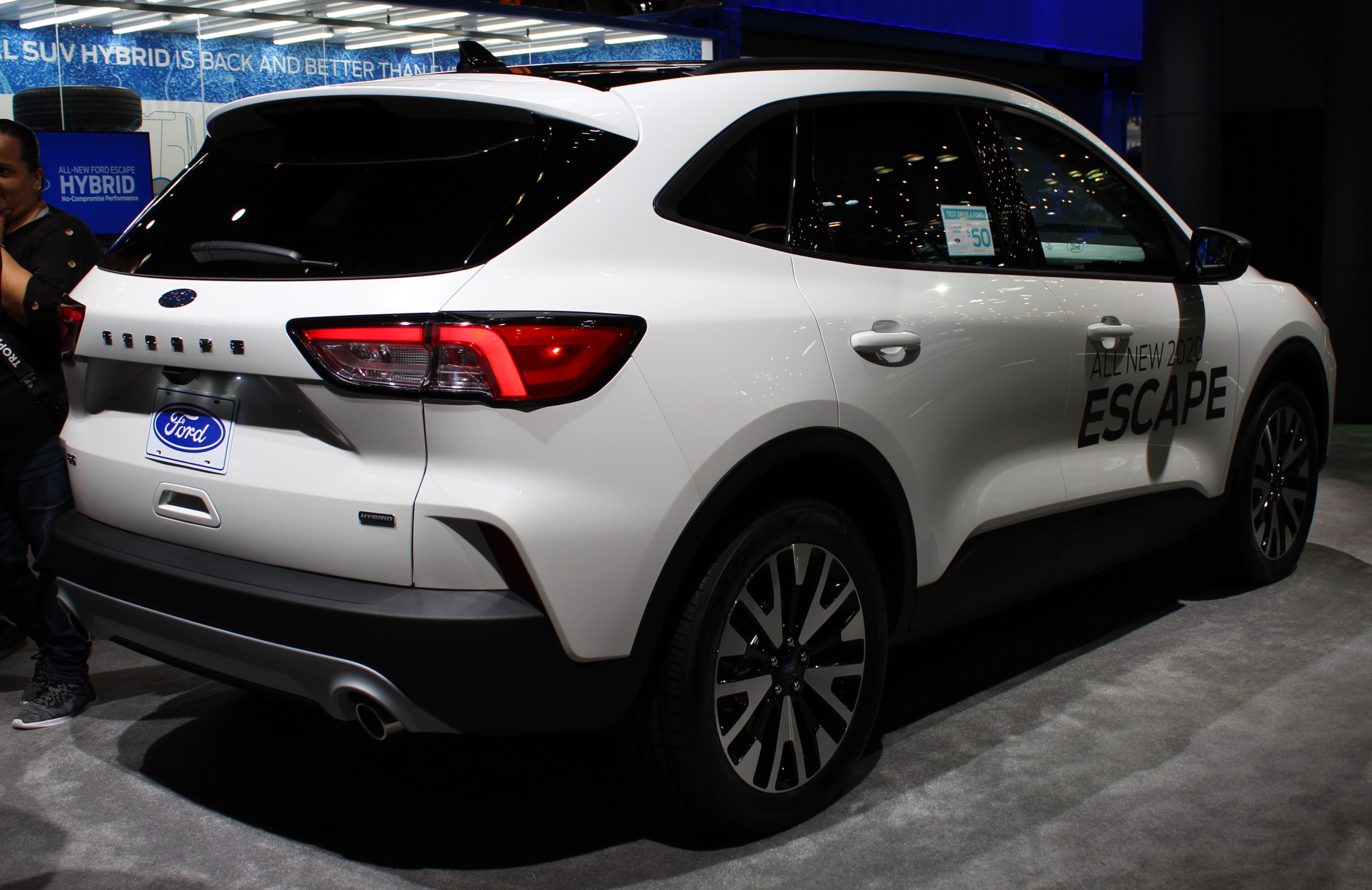
6. **Ford Escape Hybrid (2020-Present)**The Ford Escape Hybrid, particularly models from 2020 onwards, has unfortunately struggled with reliability, ranking 25th out of 44 Ford models. Owners have lodged a significant number of complaints, totaling 216 over eight model years, underscoring persistent concerns. Moreover, Ford has issued recalls for approximately 125,000 vehicles due to engine compartment fire risks, a serious issue that highlights fundamental reliability problems plaguing this hybrid system since its recent reintroduction. The current Escape Hybrid represents Ford’s ambition in the compact hybrid SUV market, but its execution has unfortunately led to numerous frustrating issues.
Engine reliability stands out as the Escape Hybrid’s most significant vulnerability. Its 2.5-liter Atkinson-cycle engine has been widely reported to suffer from various manufacturing and design defects. A particularly concerning and recurrent problem involves coolant leaks emanating from cracked engine blocks, an issue observed across multiple model years. These failures frequently necessitate a complete engine replacement, often under warranty, indicating a severe underlying flaw. The engine’s aluminum construction, while lightweight for efficiency, appears susceptible to thermal stress cracking, which can lead to catastrophic coolant loss and potential overheating damage at relatively low mileages, pointing to fundamental design or manufacturing oversights.
Beyond engine issues, the hybrid system’s integration has proven to be particularly problematic. Owners frequently report failures of the power electronics and motor control systems, manifesting as a sudden loss of hybrid power, erratic system behavior, or even complete hybrid system shutdowns. These incidents often force the vehicle to operate solely on gasoline power, undermining the hybrid’s efficiency benefits. Furthermore, the regenerative braking system is frequently prone to malfunctions, causing inconsistent brake pedal feel and a noticeable reduction in braking effectiveness. These integration problems suggest inadequate development and testing, indicating poor coordination among the various hybrid system components.
Battery reliability has emerged as another substantial weakness for the Escape Hybrid, with premature battery pack failures reported across several model years. The lithium-ion battery pack has demonstrated poor thermal management capabilities, leading to overheating conditions that can severely damage battery cells and significantly reduce overall capacity. Some owners have experienced complete battery pack failures within the first 50,000 miles, requiring expensive replacements that are not always fully covered under warranty. Additionally, software calibration issues contribute to unpredictable vehicle behavior, with some vehicles exhibiting sudden losses of power or unexpected acceleration events, which can be dangerous in traffic situations.
Car Model Information: 2024 GMC Sierra 1500 Elevation
Name: Ford Escape
Caption: 2021 Escape Hybrid (US)
Manufacturer: Ford Motor Company
Aka: Unbulleted list
Production: 2000–present
ModelYears: 2001–present
Class: Compact crossover SUV
BodyStyle: SUV
Layout: Unbulleted list
Predecessor: Nissan Terrano II
Successor: Ford Territory (China)
Categories: 2010s cars, 2020s cars, All-wheel-drive vehicles, All Wikipedia articles written in American English, All articles with dead external links
Summary: The Ford Escape is a compact crossover SUV manufactured and marketed by the Ford Motor Company since the 2001 model year. The first Ford SUV derived from a car platform, the Escape fell below the Ford Explorer in size; the Escape was sized between the Ford EcoSport and Ford Edge. The 2005 model year Ford Escape Hybrid was the first hybrid-electric vehicle from Ford, and the first hybrid produced as an SUV.
The first two generations of the Escape used the Ford CD2 platform (jointly developed with Mazda), leading to the release of the rebadged variants, the Mazda Tribute and Mercury Mariner; as with the Escape, both the Tribute and Mariner were marketed in North America (the Mariner was never marketed in Canada). In Europe, the Escape was initially branded as the Ford Maverick from 2001 to 2008 (replacing a Nissan-produced SUV).
Under the mid-2000s “One Ford” globalization strategy, the third and fourth-generation designs of the Escape have been unified with the Ford Kuga, designed by Ford of Europe. Sharing a common body and chassis underpinnings (and several engines), the Escape and Kuga are manufactured in their home markets. As with previous generations, the fourth-generation Escape is offered with gasoline, hybrid, and plug-in hybrid options. Outside of North America, the Ford Escape is marketed in Australia, China, and Taiwan.
In August 2025, it was announced that Ford will be discontinuing the Escape after the 2026 model year.
Get more information about: Ford Escape
Buying a high-performing used car >>>
Brand: Ford Model: Escape Hybrid
Price: $52,766 Mileage: 15,984 mi.

7. **Jeep Wrangler 4xe Plug-In Hybrid (2021-Present)**The Jeep Wrangler 4xe represents an ambitious leap, attempting to fuse the brand’s iconic off-road capability with modern plug-in hybrid technology. However, this innovative combination has unfortunately been marred by a series of reliability issues, disappointing owners who expected Jeep’s traditional rugged durability. The complex integration of sophisticated hybrid systems with the Wrangler’s inherently rugged construction has inadvertently created numerous failure points. These manifest as expensive repairs and extended downtime, proving frustrating for owners who invested in the vehicle for its supposed blend of eco-friendliness and uncompromising capability.
Engine problems are a significant concern for the Wrangler 4xe’s 2.0-liter turbocharged four-cylinder powerplant, which serves as the core of its hybrid system. Turbocharger failures are notably common, often occurring within the first 30,000 miles. These issues are frequently attributed to inadequate cooling and lubrication systems, which struggle to cope with the demands placed upon them. Furthermore, the engine’s high-pressure fuel system is susceptible to frequent component failures, including problems with the fuel pump and injectors, leading to rough running and diminished power output. Carbon buildup on intake valves, a known issue in many direct-injection engines, appears to occur more rapidly in the 4xe, exacerbated by the hybrid system’s frequent start-stop operation patterns.
The plug-in hybrid system integration itself has proven to be particularly unreliable. Owners frequently report failures of the electric motor, inverter, and charging systems. A worrying trend involves the sudden loss of electric power during off-road driving, which can leave drivers stranded in remote locations where the hybrid system’s complexity makes field repairs impossible. This directly contradicts the vehicle’s advertised capability. Moreover, a traditional Jeep strength, deep water crossings, often leads to water ingress that damages hybrid system components which were evidently not adequately sealed for such conditions. These electrical problems are not easily remedied; they frequently necessitate complete system replacement rather than simple repairs, resulting in extensive downtime and enormous repair costs.
This clash between traditional off-road ruggedness and sophisticated electrical systems highlights a fundamental design oversight. While Jeeps are celebrated for their ability to traverse challenging terrain, the 4xe’s hybrid components introduce a fragility that undermines this core attribute. The added complexity and potential for expensive electronic failures mean that venturing off the beaten path can become a costly gamble, directly impacting the vehicle’s long-term utility and value. For a brand synonymous with resilience, these vulnerabilities are a significant concern for owners.
Car Model Information: 2024 GMC Sierra 1500 Elevation
Name: Jeep Wrangler (JL)
Caption: 2021 Jeep Wrangler Unlimited PHEV
Manufacturer: Jeep
Production: November 2017–present
Class: Mid-size,Sport utility vehicle
ModelYears: 2018–present
Assembly: Ranjangaon,Pune
BodyStyle: SUV
Layout: FR layout
Engine: Unbulleted list
Transmission: Unbulleted list
Motor: Unbulleted list
Abbr: on integrated transmission-traction motor (PHEV)
Drivetrain: BAS hybrid,mild hybrid
Battery: Unbulleted list
Range: Convert
ElectricRange: Convert
Charging: Vehicle-to-grid
Wheelbase: cvt
Length: cvt
Width: cvt
Height: cvt
Weight: convert
Predecessor: Jeep Wrangler (JK)
Related: Jeep Gladiator (JT)
ModelCode: JL
Categories: All Wikipedia articles written in American English, All articles needing additional references, All articles with bare URLs for citations, All articles with specifically marked weasel-worded phrases, All articles with unsourced statements
Summary: The Jeep Wrangler (JL) is the fourth generation of the Wrangler off-road vehicle, available in two- and four-door body styles. Unveiled at the 2017 Los Angeles Auto Show on November 29, 2017, production of the vehicle began in November 2017.
Get more information about: Jeep Wrangler (JL)
Buying a high-performing used car >>>
Brand: Jeep Model: Wrangler 4xe
Price: $52,766 Mileage: 15,984 mi.
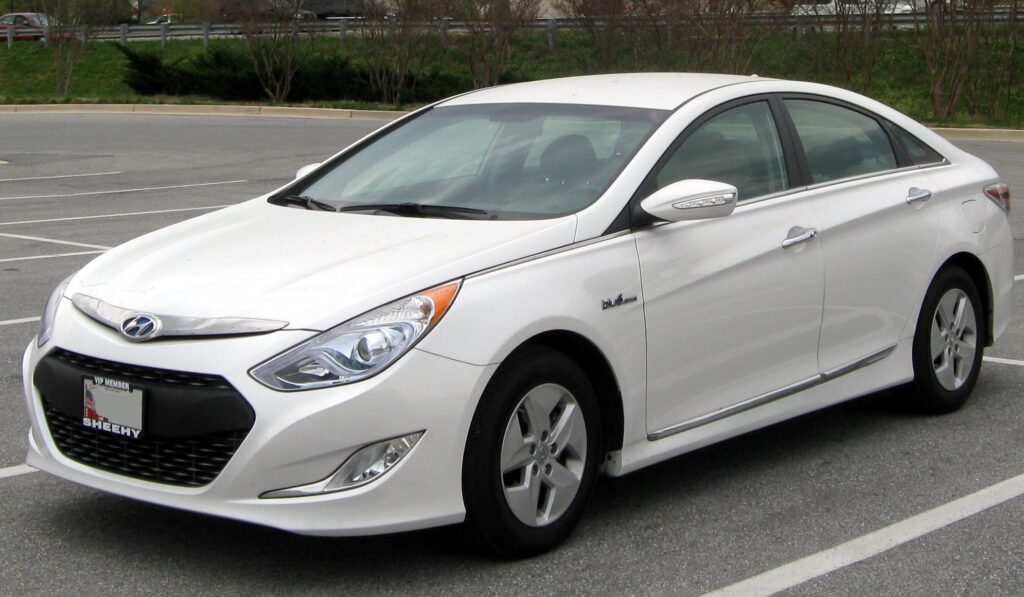
8. **Hyundai Sonata Hybrid (2016-2019)**The Hyundai Sonata Hybrid’s reliability record has been significantly compromised by a combination of factors. It suffers from the same notorious engine problems that have plagued many non-hybrid Sonata models, coupled with additional hybrid-specific issues that collectively create a particularly unreliable powertrain combination. This vehicle represented Hyundai’s earnest attempt to compete in the highly competitive midsize hybrid sedan market. However, a series of execution problems and insufficient quality control have unfortunately resulted in numerous expensive failures, ultimately damaging the model’s reputation and significantly reducing its resale value.
Engine reliability problems unequivocally dominate the Sonata Hybrid’s list of issues. The 2.0-liter naturally aspirated engine has been a recurring source of concern, frequently suffering from the same bearing and connecting rod failures that have affected millions of other Hyundai vehicles across various models. These catastrophic engine failures can lead to complete engine seizure and necessitate costly replacements. In addition to these internal combustion engine issues, the electric motor and its associated power electronics frequently experience failures that require the expensive replacement of major components, compounding the powertrain’s unreliability.
Integration between the gasoline engine and electric systems has consistently proven problematic. Software glitches are a common complaint, causing erratic hybrid operation, where the transition between power sources is neither smooth nor predictable. This inconsistency directly leads to reduced fuel economy, negating one of the primary benefits of hybrid ownership. Furthermore, the regenerative braking system often malfunctions, resulting in an inconsistent brake pedal feel. This unpredictability can lead to potentially dangerous braking performance variations, impacting driver confidence and overall safety.
Transmission problems further plague both hybrid and non-hybrid Sonata models. However, the hybrid system’s additional complexity significantly exacerbates these issues, making repairs more difficult and substantially more expensive. The six-speed automatic transmission frequently experiences failures of internal components, harsh shifting, and even complete loss of certain gear ranges. The intricate integration of this transmission with the hybrid system creates highly complex interactions, making accurate diagnosis particularly challenging. This often leads to multiple repair attempts and extended downtime, as technicians struggle to pinpoint the root causes of intermittent problems, much to the frustration of owners.
Car Model Information: 2024 GMC Sierra 1500 Elevation
Name: Hyundai Sonata
Caption: 2024 Hyundai Sonata SEL (US)
Manufacturer: Hyundai Motor Company
Production: 1985–present
Class: Mid-size car
BodyStyle: sedan (automobile)
Layout: ubl
Predecessor: Hyundai Stellar
Categories: 1990s cars, 2000s cars, 2010s cars, 2020s cars, All Wikipedia articles written in American English
Summary: The Hyundai Sonata (Korean: 현대 쏘나타) is a mid-size car that has been manufactured by Hyundai since 1985. The first generation Sonata, which was introduced in 1985, was a facelifted version of the Hyundai Stellar with an engine upgrade, and was withdrawn from the market in two years due to poor customer reaction. While the nameplate was originally only sold in South Korea, the second generation of 1988 was widely exported.
The Sonata is currently manufactured in South Korea, China, and Pakistan. It was named after the musical term, sonata.
Get more information about: Hyundai Sonata
Buying a high-performing used car >>>
Brand: Hyundai Model: Sonata Hybrid
Price: $52,766 Mileage: 15,984 mi.
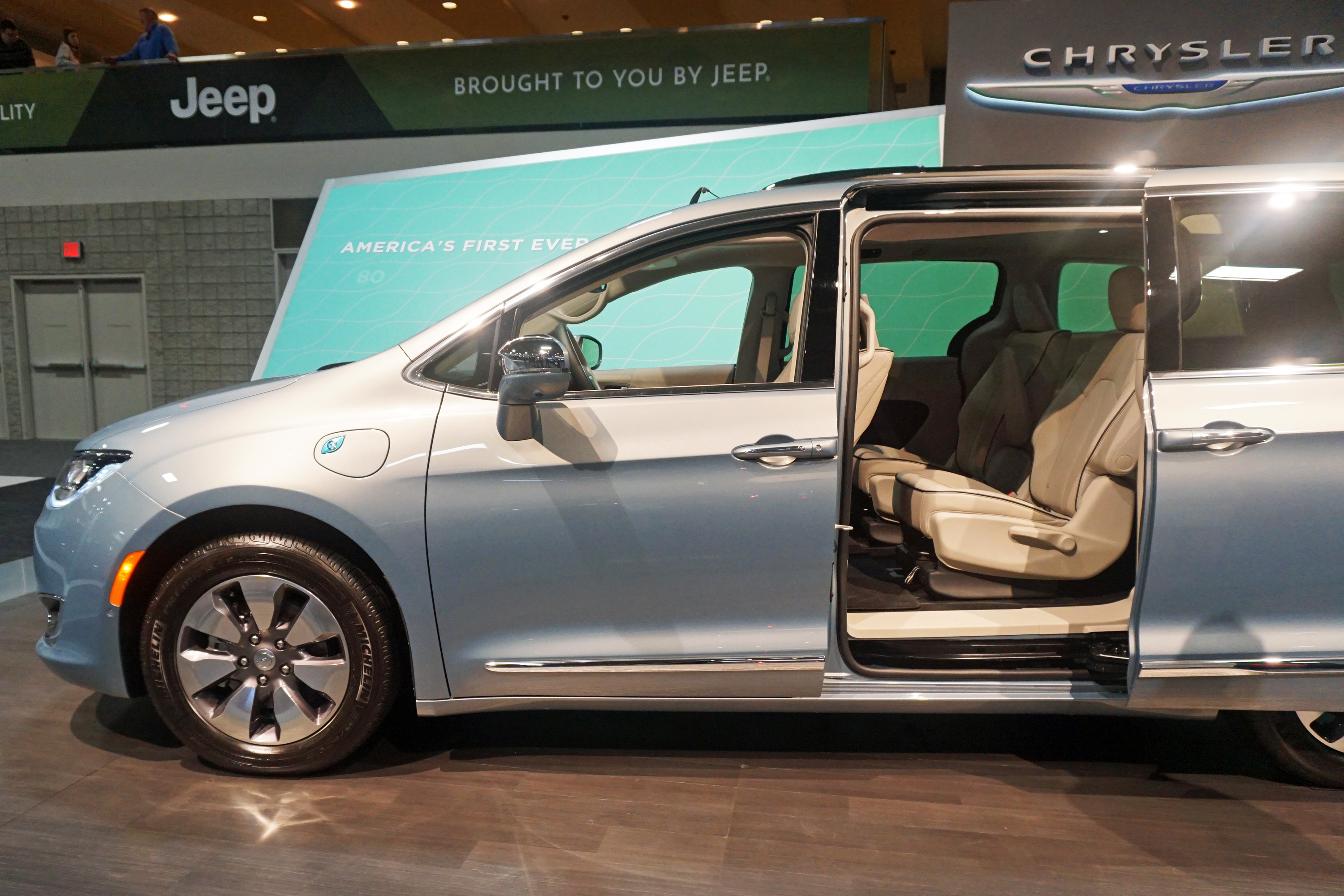
9. **Chrysler Pacifica Hybrid (2017-Present)**The Chrysler Pacifica Hybrid represents an ambitious and commendable attempt to electrify the minivan segment, offering families a more fuel-efficient and environmentally friendly option. However, the execution of this innovative vision has been unfortunately hampered by numerous reliability issues that have deeply frustrated owners. Many purchased the vehicle specifically for its cutting-edge technology and practical capabilities. The complex integration of plug-in hybrid systems with traditional minivan functionality has inadvertently created multiple failure points, which frequently manifest as expensive repairs and extended periods of reduced capability whenever its intricate systems malfunction.
Engine problems significantly affect the Pacifica Hybrid’s 3.6-liter V6 powerplant, which must operate in complex conjunction with the hybrid system’s electric motors and sophisticated control systems. The plug-in hybrid system itself has proven consistently unreliable, with frequent failures reported for its electric motors, inverter systems, and charging infrastructure. Owners often report a sudden and concerning loss of electric power, sometimes occurring during crucial family trips, which leaves them stranded with only a limited gasoline-only range and significantly reduced capability. The dual-motor setup, while technologically advanced, unfortunately increases overall complexity, thereby introducing additional failure points that are not present in simpler hybrid architectures. Moreover, battery thermal management systems frequently malfunction, leading to reduced electric range and potential safety shutdowns during operation.
Battery reliability has emerged as a particularly problematic area for the Pacifica Hybrid. The large 16-kWh lithium-ion battery pack has unfortunately demonstrated poor longevity and is prone to frequent failures. Compounding this issue, the battery pack’s physical placement within the vehicle’s structure makes replacement an exceptionally expensive and time-consuming endeavor. Such replacements often require extended dealership visits, which, for families relying on their minivan, means significant inconvenience and prolonged periods without their essential transportation. This represents a substantial long-term ownership cost that often catches buyers by surprise.
Further adding to the vehicle’s reliability woes, the infotainment system frequently crashes or becomes unresponsive, particularly when attempting to display hybrid system information. Climate control systems often malfunction when the vehicle operates solely on electric power, compromising passenger comfort. Additionally, various convenience features are prone to failing intermittently, a symptom of underlying electrical system instability. These problems are often intermittent in nature, making them notoriously difficult to diagnose accurately. This often leads to multiple repair attempts and considerable customer frustration, highlighting a lack of robust system integration and quality control in critical areas.
Car Model Information: 2024 GMC Sierra 1500 Elevation
Name: Chrysler Pacifica (RU)
Manufacturer: Chrysler (automotive brand)
Aka: Chrysler Voyager,Chrysler Grand Caravan (Canada, 2021–present)
Production: 2016–present
ModelYears: 2017–present
Assembly: Windsor, Ontario
Designer: Irina Zavatski,Winnie Cheung (interior)
Class: Minivan
BodyStyle: 5-door minivan
Layout: Front-engine, front-wheel drive,Front-engine, all-wheel drive
Platform: Compact U.S. Wide platform
Related: Chrysler 200#Second generation (2014–)
Engine: Chrysler Pentastar engine#3.6L,FCA Global Medium Engine
Motor: 2x electric motors (SiEVT main motor & motor generator; PHEV)
Transmission: ZF 9HP transmission,automatic transmission,Continuously variable transmission
Drivetrain: PHEV
ElectricRange: cvt
Battery: val,lithium-ion battery
Wheelbase: 3089 mm
Abbr: on
Order: flip (hybrid)
Length: 203.6 in
Width: 79.6 in
Height: convert
Weight: {{convert,1964,kg,lb,abbr=on,order=flip
Predecessor: Chrysler minivans (RT)
Categories: 2010s cars, All-wheel-drive vehicles, Articles with short description, CS1 Spanish-language sources (es), Cars introduced in 2016
Summary: The Chrysler Pacifica is a minivan produced by the Chrysler division of Stellantis since the 2017 model year. Replacing the Chrysler Town & Country, the Pacifica is the sixth generation of Chrysler minivans, taking its name from the 2004–2008 product line. Along with serving as the first minivan with a plug-in hybrid drivetrain, the Pacifica has also served as a platform for autonomous vehicle development.
For the 2020 model year, Chrysler repackaged the lower-trim versions of the Pacifica as a revived Chrysler Voyager, largely to expand fleet sales of the model line; following the retirement of the Dodge Grand Caravan, the Chrysler Voyager was introduced in Canada for 2021 as the Chrysler Grand Caravan (moving the nameplate from Dodge to Chrysler after 36 years). Following the retirement of the Chrysler 300 sedan, the Pacifica/Voyager/Grand Caravan is currently the only vehicle marketed by Chrysler.
Chrysler has assembled the Pacifica minivan (and the Voyager/Grand Caravan) in its Windsor Assembly facility in Ontario (home to Chrysler minivan assembly since 1983).
Get more information about: Chrysler Pacifica (minivan)
Buying a high-performing used car >>>
Brand: Chrysler Model: Pacifica Hybrid
Price: $52,766 Mileage: 15,984 mi.
Read more about: The Evolution of the Family Car: 50 Years of Iconic Models
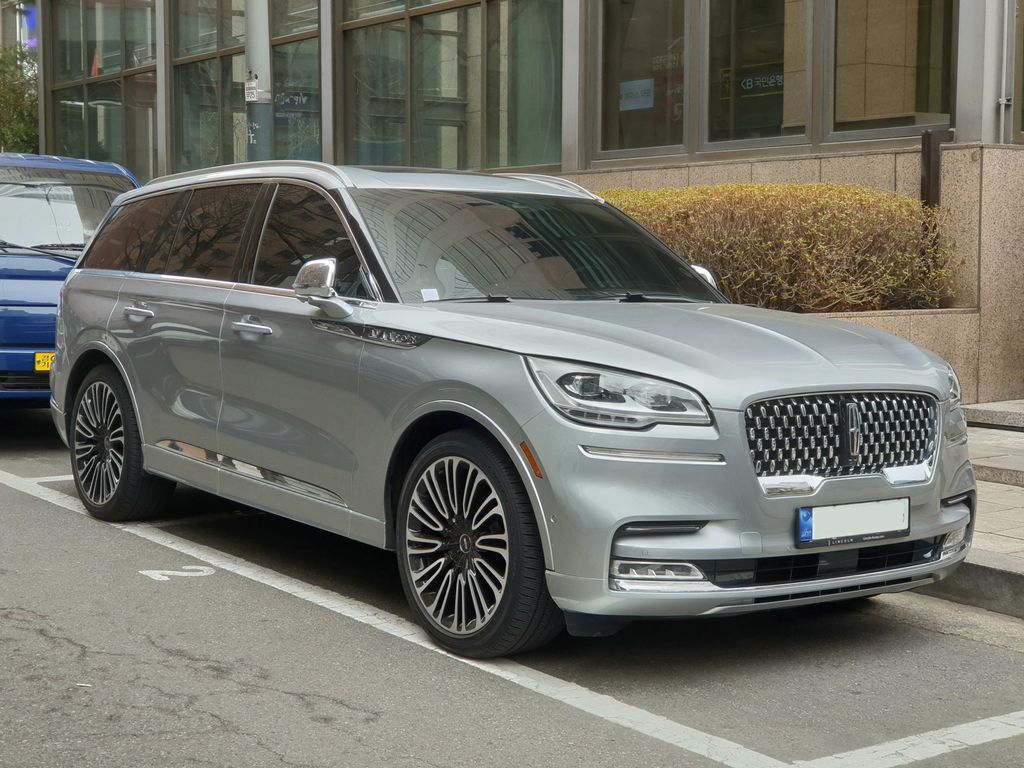
10. **Lincoln Aviator Grand Touring Hybrid (2020-Present)**The Lincoln Aviator Grand Touring represents Ford’s ambitious foray into bringing plug-in hybrid technology to the luxury SUV segment, aiming to combine premium refinement with advanced efficiency. However, this vehicle’s journey has unfortunately been plagued by numerous reliability issues, deeply disappointing owners who rightfully expected both the opulent luxury and dependable operation synonymous with the Lincoln brand. The Aviator’s exceedingly complex systems integration, combined with its premium positioning, makes any necessary repairs particularly expensive. Furthermore, the persistent problems within the hybrid system itself significantly compromise the refined driving experience that luxury buyers expect and demand from their high-end vehicles.
Engine reliability problems are a notable concern for the Aviator’s twin-turbocharged 3.0-liter V6, which must meticulously coordinate its operation with the hybrid system’s electric motor and complex control algorithms. Turbocharger failures are regrettably common, often occurring within the first 40,000 miles. These issues are exacerbated by the additional stress imposed by the intricate hybrid system integration. The engine’s high-pressure fuel system frequently experiences component failures, while carbon buildup problems, typical of direct-injection engines, are unfortunately exacerbated by the hybrid system’s frequent start-stop cycles. These pervasive engine problems often necessitate extensive engine work that can easily exceed $10,000 in repair costs, a significant burden for owners.
The plug-in hybrid system integration has proven to be particularly unreliable, manifesting in frequent failures of the electric motor, power electronics, and charging systems. The sheer complexity of this system often overwhelms the vehicle’s electrical architecture, leading to cascading failures that can affect multiple systems simultaneously. Owners have reported alarming incidents, such as the sudden loss of hybrid power during highway driving, which can create potentially dangerous situations when the vehicle unexpectedly loses a significant portion of its power output. Additionally, the regenerative braking system frequently malfunctions, causing an inconsistent brake pedal feel and, more critically, reduced stopping capability, compromising safety.
Battery system problems further plague the Aviator’s 13.6-kWh lithium-ion battery pack. This large capacity pack has unfortunately demonstrated poor reliability and a propensity for premature capacity degradation, undermining the vehicle’s electric range and overall efficiency. Beyond the core hybrid components, the advanced infotainment and driver assistance systems also experience regular malfunctions, often requiring complex software updates or expensive component replacement. These luxury features, while impressive when fully functioning, regrettably create additional failure points that make the Aviator particularly expensive to maintain and repair compared to more conventional luxury SUVs, diminishing its overall appeal and long-term value.
Car Model Information: 2024 GMC Sierra 1500 Elevation
Name: Lincoln Aviator
Caption: 2020 Lincoln Aviator
Manufacturer: The Lincoln Motor Company
Production: unbulleted list
ModelYears: unbulleted list
Class: unbulleted list
BodyStyle: Sport utility vehicle
Layout: unbulleted list
Categories: 2010s cars, 2020s cars, All Wikipedia articles written in American English, Articles with short description, Cars introduced in 2002
Summary: The Lincoln Aviator is a mid-size, three-row luxury SUV manufactured and marketed under the Lincoln brand of Ford Motor Company — and now in its second generation, with a hiatus from 2006 to 2020.
The first generation Aviator was manufactured for 2003–2005 model years as a rebadged variant of the third generation Ford Explorer — and assembled at the now-closed St. Louis Assembly in Hazelwood, Missouri, alongside the Explorer and Mountaineer.
For the 2020 model year, Lincoln reintroduced the Aviator as a badge engineered variant of the sixth generation Ford Explorer manufactured at Chicago Assembly and offered with a plug-in hybrid variant.
Get more information about: Lincoln Aviator
Buying a high-performing used car >>>
Brand: Lincoln Model: Aviator Grand Touring Hybrid
Price: $52,766 Mileage: 15,984 mi.
Choosing a hybrid vehicle demands a comprehensive evaluation that extends beyond initial purchase price and projected fuel savings. While the environmental benefits and reduced emissions are compelling, the long-term cost of ownership is fundamentally tied to a vehicle’s reliability. As we’ve seen, some hybrids are engineered for remarkable longevity, offering years of trouble-free operation, while others can become financial liabilities due to persistent, expensive repairs. Informed consumers must diligently research specific models, understanding not just their efficiency, but critically, their track record for dependability. Prioritizing robust engineering and proven systems can safeguard your investment, ensuring that your hybrid truly delivers on its promise of sustainable and economical transportation for the long haul.

